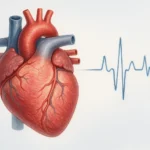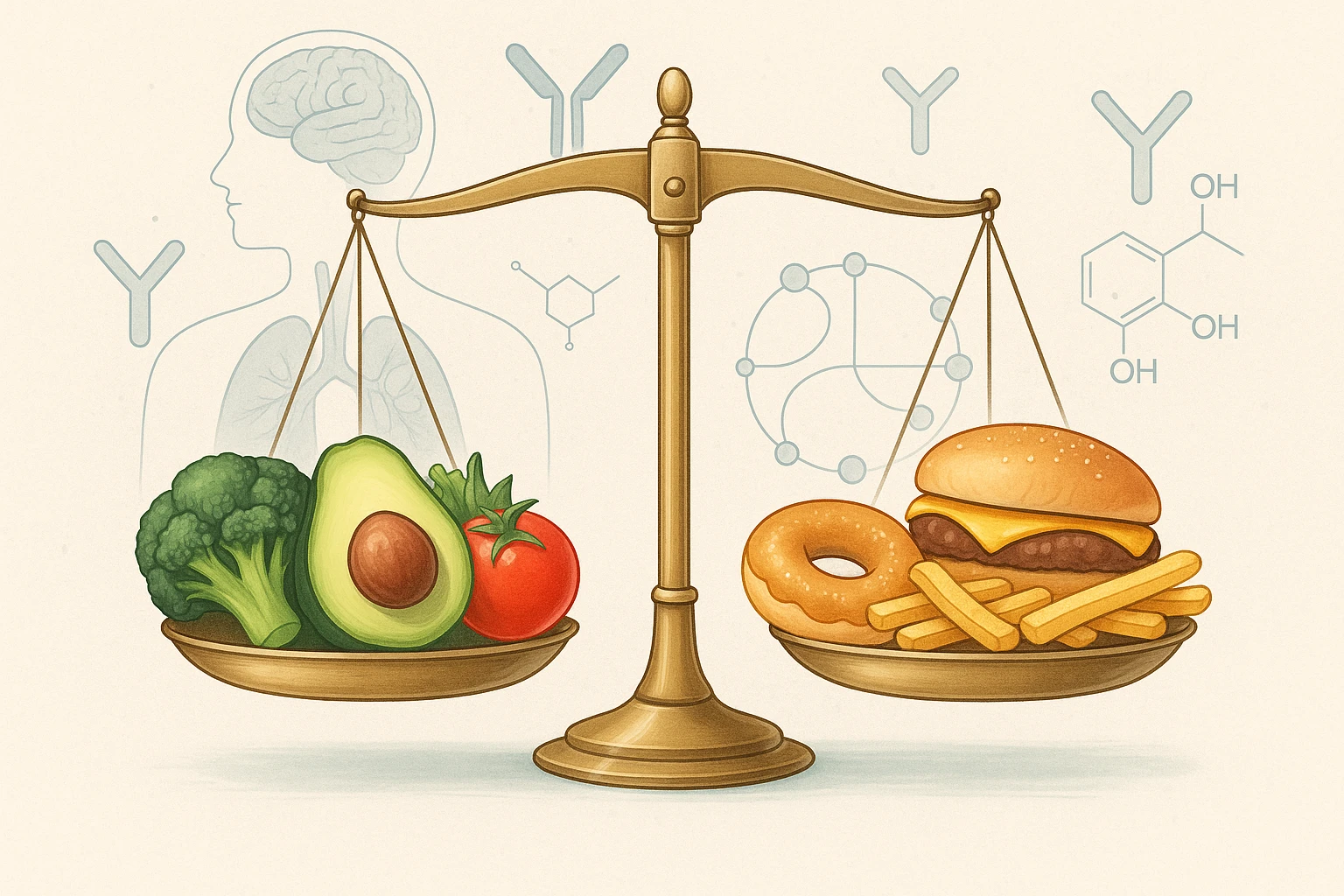
Medical Approaches to Safe and Lasting Weight Loss
Biological Regulation of Weight and Challenges in Weight Loss
The Science Behind Body Weight Regulation
Body weight is maintained through a complex interaction between the brain, hormones, metabolism, and adipose tissue. Neurohormonal pathways-particularly those involving the hypothalamus-help regulate hunger and energy use by responding to signals such as leptin, ghrelin, and insulin. These signals reflect the body’s current energy stores and nutritional state. Adipose tissue is not merely a passive fat reservoir; it functions as an endocrine organ, releasing hormones that communicate with the central nervous system to influence appetite and metabolic rate.
- Leptin: Signals energy sufficiency and suppresses appetite.
- Ghrelin: Stimulates hunger and food intake.
- Insulin: Reflects nutritional state and influences fat storage and satiety.
Genetic and environmental factors also play important roles. Some individuals inherit a predisposition toward higher energy storage efficiency or differences in appetite regulation, while environmental factors such as diet composition, stress, and physical activity levels further shape energy balance. Together, these biological and behavioral elements establish each person’s unique weight set point-a range the body naturally defends.
Why Weight Loss Is Biologically Challenging
When a person experiences weight loss, the body responds as if it were under threat of starvation. Physiological adaptations occur to conserve energy and promote survival. Resting energy expenditure decreases, meaning the body burns fewer calories even at rest. At the same time, hormonal changes increase hunger and food-seeking behavior. These adaptive mechanisms, while protective in evolutionary terms, make long-term weight reduction challenging in modern environments where food is readily available.
This phenomenon, often referred to as the “weight-reduced state,” helps explain why maintaining lost weight requires sustained behavioral effort. The body’s internal systems work persistently to restore its previous energy balance, demonstrating that obesity and weight control are influenced by biology as much as by behavior.
Setting Realistic Clinical Goals
Given these biological constraints, setting realistic and achievable weight-loss goals is essential. Clinically, even modest weight reduction-about 5 to 10 percent of initial body weight-produces meaningful improvements in metabolic health. Such reductions can lower blood glucose levels, reduce blood pressure, and improve lipid profiles, contributing to better long-term outcomes for individuals with overweight or obesity.
- Improved blood glucose control
- Lowered blood pressure
- Enhanced lipid profile and cardiovascular health
Rather than striving for rapid or extreme changes, focusing on gradual, sustainable weight loss aligns better with the body’s adaptive physiology. This approach supports health improvements while minimizing the compensatory mechanisms that often lead to regain, making it a more effective and compassionate strategy for long-term management.
Clinical Assessment and Preparation for Weight Management
Clinical and Metabolic Evaluation
A thorough initial assessment is the foundation of effective weight management. This process begins with a detailed patient history that includes dietary patterns, physical activity levels, sleep quality, and psychological factors such as stress or mood disorders. Understanding past weight trajectories, previous attempts at weight reduction, and current motivations helps clinicians develop individualized care plans that align with patient needs and expectations.
- Dietary habits and caloric intake
- Physical activity levels and sedentary behavior
- Sleep quality and psychological factors
- Previous weight changes and motivation for treatment
Assessment also extends to identifying comorbid conditions commonly associated with excess weight, including hypertension, dyslipidemia, type 2 diabetes, and obstructive sleep apnea. Medication review is essential, as some agents may contribute to weight gain or impede weight loss efforts. Baseline metabolic evaluation typically involves laboratory testing to assess glucose tolerance, lipid profile, liver function, and thyroid status. These findings guide the clinician in determining whether lifestyle modification alone is appropriate or if pharmacotherapy or bariatric surgery should be considered as part of a comprehensive management strategy.
| Assessment Area | Purpose |
|---|---|
| Glucose tolerance test | Evaluates insulin resistance and diabetes risk |
| Lipid profile | Assesses cardiovascular risk |
| Liver function tests | Identifies fatty liver disease or medication effects |
| Thyroid function tests | Detects hypothyroidism contributing to weight gain |
Successful weight management depends not only on initiating treatment but also on anticipating the maintenance phase from the beginning. Integrating long-term planning into early discussions helps patients understand that weight management is a chronic process rather than a short-term goal. This approach fosters realistic expectations and continuity of care across all stages of treatment.
Beyond BMI: Understanding Risk
Body mass index (BMI) remains a useful screening measure for categorizing weight status, but it has important limitations. BMI does not distinguish between fat and lean mass, nor does it reflect the distribution of adipose tissue-factors that strongly influence metabolic risk. For example, central or visceral fat accumulation is more closely linked to cardiometabolic complications than subcutaneous fat. Therefore, waist circumference, waist-to-hip ratio, and body composition analysis can provide complementary insights into health risk beyond BMI alone.
Clinical evaluation should always consider the full context of the patient’s metabolic profile, functional status, and overall health rather than relying on a single numerical value. An individualized assessment recognizes that people of the same BMI may have vastly different levels of metabolic health. By combining physical, laboratory, and behavioral information, clinicians can more accurately stratify risk and design treatment plans that address the underlying causes of weight gain while promoting sustainable, long-term outcomes.
Nutrition and Physical Activity as the Foundation of Weight Management
Creating an Effective Caloric Deficit
At the core of weight reduction lies the principle of energy balance: when caloric intake is lower than expenditure, the body draws on stored fat to meet its energy needs. This caloric restriction, or energy deficit, is the primary driver of weight loss regardless of diet type or exercise pattern. Establishing an appropriate deficit should be individualized to promote gradual, sustainable change rather than rapid loss, which often leads to metabolic adaptation and regain.
Even modest daily deficits accumulated over time result in meaningful reductions in body mass. Understanding energy intake, portion sizes, and total expenditure helps patients and clinicians align dietary adjustments with realistic expectations for progress. The goal is to achieve steady, health-oriented change while maintaining nutritional adequacy and long-term adherence.
- Energy intake: calories consumed through food and drink
- Energy expenditure: calories burned through basal metabolism and activity
- Energy deficit: when expenditure exceeds intake, leading to fat loss
Comparing Diet Types
Many diet approaches claim superiority for promoting weight loss, yet evidence shows that when total caloric intake is matched, no single macronutrient pattern consistently outperforms another. Both low-fat and low-carbohydrate diets can be effective if they create a sufficient energy deficit and are sustainable for the individual. What matters most is adherence to a dietary pattern that supports energy control, adequate nutrition, and patient preference.
| Diet Type | Key Feature | Effectiveness |
|---|---|---|
| Low-fat | Reduces dietary fat intake to lower total calories | Effective when total calories reduced |
| Low-carbohydrate | Limits carbohydrate intake, often increases protein and fat | Similar results when calorie intake is matched |
| Balanced or Mediterranean-style | Emphasizes whole foods, moderate macronutrients | Sustainable and supports metabolic health |
This understanding shifts focus from choosing a specific diet label to developing eating habits that reduce overall calorie consumption while providing balanced macronutrients. Individual factors such as taste preference, cultural patterns, and medical comorbidities often guide the best dietary fit for long-term success.
Exercise Dose and Type
Physical activity enhances the effects of dietary changes by increasing total energy expenditure and improving body composition. At least 150 minutes per week of moderate-to-vigorous aerobic exercise is associated with clinically meaningful reductions in adiposity. Each additional 30 minutes of aerobic activity per week contributes approximately half a kilogram of additional weight loss, with greater benefits seen up to 300 minutes weekly. This dose-response relationship highlights that more activity yields proportionally greater effects, within safe and sustainable limits.
Incorporating resistance training supports preservation of lean mass during weight loss and contributes to better metabolic health. When diet and exercise are combined, they produce superior outcomes compared to either strategy alone, underscoring the importance of an integrated, lifestyle-based approach to weight management.
Myths vs Facts
- Myth: Exercise alone causes major weight loss.
Fact: Exercise supports fat reduction but is most effective when paired with a dietary energy deficit. - Myth: Low-carb diets always outperform others.
Fact: When calories are equal, no diet consistently shows superiority in outcomes.
Behavioral, Medical, and Surgical Approaches to Weight Management
Behavioral Interventions for Sustainable Change
Effective weight management begins with behavioral strategies that help patients build sustainable habits. Cognitive-behavioral therapy (CBT) is a core component, focusing on identifying and modifying thought patterns that influence eating and activity behaviors. It emphasizes self-monitoring, goal setting, problem-solving, and relapse prevention-skills that enhance long-term adherence to lifestyle modifications.
- Self-monitoring: tracking food intake and activity patterns
- Goal setting: defining realistic, measurable objectives
- Problem-solving: identifying and managing barriers to adherence
- Relapse prevention: developing coping strategies for setbacks
Behavioral support often includes structured programs that promote accountability through regular follow-up, group sessions, or digital tools. Encouraging realistic expectations and coping strategies for setbacks helps patients sustain motivation over time. Integrating these behavioral principles early in treatment establishes a foundation for maintenance, ensuring that progress achieved through dietary and physical activity changes is preserved long term.
Modern Pharmacotherapies
Pharmacologic therapy serves as an adjunct to lifestyle modification when behavioral interventions alone do not achieve sufficient weight reduction. Medications used for weight management act primarily by reducing appetite, enhancing satiety, or modifying nutrient absorption. They are typically prescribed for individuals with obesity or for those with overweight and associated comorbidities when potential benefits outweigh risks.
| Therapeutic Mechanism | Primary Effect |
|---|---|
| Appetite suppression | Reduces hunger and caloric intake |
| Satiety enhancement | Increases fullness and decreases snacking |
| Nutrient absorption modification | Limits calorie uptake from dietary fat |
Comprehensive management includes careful selection and monitoring of pharmacotherapy to ensure both efficacy and safety. Medication should always complement, not replace, lifestyle changes such as nutrition counseling and physical activity. Integrating pharmacologic options into a broader plan supports more consistent results and facilitates maintenance when combined with behavioral reinforcement and continued clinical supervision.
Metabolic and Bariatric Surgery
For individuals with severe obesity or obesity-related complications, bariatric or metabolic surgery may be indicated as part of a multidisciplinary care approach. Procedures such as gastric bypass, sleeve gastrectomy, or adjustable gastric banding aim to reduce caloric intake and improve metabolic health through both mechanical and hormonal mechanisms. Patient selection depends on clinical criteria including body mass index, comorbid conditions, and prior response to non-surgical interventions.
Long-term outcomes after surgery depend on integrating maintenance and behavioral follow-up into the initial treatment plan. Regular postoperative monitoring, nutritional support, and lifestyle counseling are essential to sustain weight loss and prevent complications. When medical, behavioral, and surgical treatments are aligned within a comprehensive strategy, patients experience improved durability of results and overall health outcomes.
Maintaining Weight Loss and Long-Term Follow-Up
Physiology of Weight Regain
After weight loss, the body enters a weight-reduced state characterized by metabolic and hormonal adaptations that promote energy conservation and increased appetite. Levels of hunger-stimulating hormones, such as ghrelin, often rise, while satiety signals decline. Resting energy expenditure decreases, meaning fewer calories are burned at rest compared with pre-weight-loss levels. These changes represent the body’s attempt to restore energy balance, making sustained weight loss biologically challenging.
- Increased hunger hormones (e.g., ghrelin) stimulate appetite.
- Reduced satiety signals make it harder to feel full.
- Lower resting energy expenditure decreases total calorie burn.
Understanding these physiological mechanisms is essential for clinical care and patient education. They highlight that weight regain is not simply a matter of willpower but a predictable biological response. Recognizing this helps clinicians and patients develop realistic, long-term strategies that address internal drivers of regain and support lasting weight management.
<h3>Designing Maintenance Plans</h3>
<p>Effective weight maintenance requires a structured, proactive approach that tackles the biological, behavioral, and environmental factors influencing regain. Continuous monitoring of body weight, dietary intake, and physical activity allows early detection of relapse patterns. Behavioral reinforcement-through self-monitoring, periodic counseling, or digital feedback-helps sustain motivation and accountability.</p>
<ul>
<li>Ongoing tracking of body weight and dietary habits</li>
<li>Regular counseling and behavioral reinforcement</li>
<li>Flexible plans that adapt to lifestyle changes</li>
<li>Strong social support and consistent follow-up</li>
</ul>
<p>Maintenance plans should prioritize flexibility rather than strict restriction, allowing for adjustments as life circumstances evolve. Incorporating relapse-prevention strategies, social support, and regular follow-up enhances long-term adherence. Integrating maintenance goals into the initial treatment plan ensures that weight stability becomes a defined phase of therapy, not an afterthought.</p>
<h3>Tailoring Care to Populations</h3>
<p>Weight maintenance strategies should be tailored to the needs of different populations. Older adults may need greater focus on preserving lean mass and functional capacity, while adolescents benefit from family-based interventions that reinforce healthy behavior patterns. For individuals with metabolic comorbidities such as type 2 diabetes or nonalcoholic fatty liver disease, regular monitoring of metabolic markers aligns weight goals with overall health outcomes.</p>
<table>
<caption>Examples of Tailored Weight Maintenance Considerations</caption>
<thead>
<tr><th>Population</th><th>Key Considerations</th></tr>
</thead>
<tbody>
<tr><td>Older adults</td><td>Focus on preserving muscle mass and functional strength</td></tr>
<tr><td>Adolescents</td><td>Incorporate family-based behavioral support</td></tr>
<tr><td>Patients with type 2 diabetes or NAFLD</td><td>Monitor metabolic parameters and adjust caloric goals accordingly</td></tr>
</tbody>
</table>
<p>A <strong>multidisciplinary approach</strong>-integrating medical, nutritional, psychological, and physical activity expertise-supports comprehensive, lifelong management. Coordinated care ensures that physiological and behavioral challenges are addressed simultaneously, promoting sustained weight control and improved quality of life.</p>
<figure>
<img src="" alt="Diagram showing the interaction of biological, behavioral, and environmental factors influencing weight maintenance.">
<figcaption>Illustration of how biological adaptations, behaviors, and environmental influences interact to sustain long-term weight management.</figcaption>
</figure>
Frequently Asked Questions About Weight Loss
- Why is it so hard to lose weight and keep it off?
- After weight loss, the body reduces its metabolic rate and increases hunger hormones to conserve energy. These natural responses make long-term weight maintenance challenging.
- Does metabolism really slow down after losing weight?
- Yes. Resting energy expenditure often decreases after weight loss, meaning the body burns fewer calories at rest compared to before losing weight.
- Is one type of diet proven to work better than others?
- When calorie intake is the same, low-fat, low-carbohydrate, and balanced diets all produce similar weight loss results. Sustainability and adherence matter most.
- How much exercise supports effective weight loss?
- About 150 minutes of moderate-to-vigorous aerobic activity per week can lead to measurable fat loss. Increasing to 300 minutes offers greater benefits if safe and feasible.
- Can medications help with weight loss?
- Prescription weight-loss medications may assist when lifestyle changes alone are insufficient. They work by reducing appetite, enhancing fullness, or limiting calorie absorption under medical supervision.
- When is bariatric surgery considered?
- Surgery may be recommended for individuals with severe obesity or weight-related complications when nonsurgical treatments have not achieved sufficient results.
- How can someone prevent regaining weight after losing it?
- Ongoing monitoring, balanced nutrition, regular exercise, and behavioral support are key. These help counter hormonal and environmental factors that encourage regain.
- Why do some people gain weight more easily than others?
- Genetic differences, hormonal signals, stress, and lifestyle factors influence how the body stores and uses energy, making some individuals more prone to weight gain.
- Is a small amount of weight loss still beneficial?
- Absolutely. Losing just 5-10% of initial body weight can improve blood pressure, cholesterol, and blood sugar control, reducing the risk of chronic diseases.
- What role does mental health play in weight management?
- Psychological factors such as stress, mood, and emotional eating can affect eating habits and motivation. Behavioral therapy often helps address these patterns for long-term success.




















